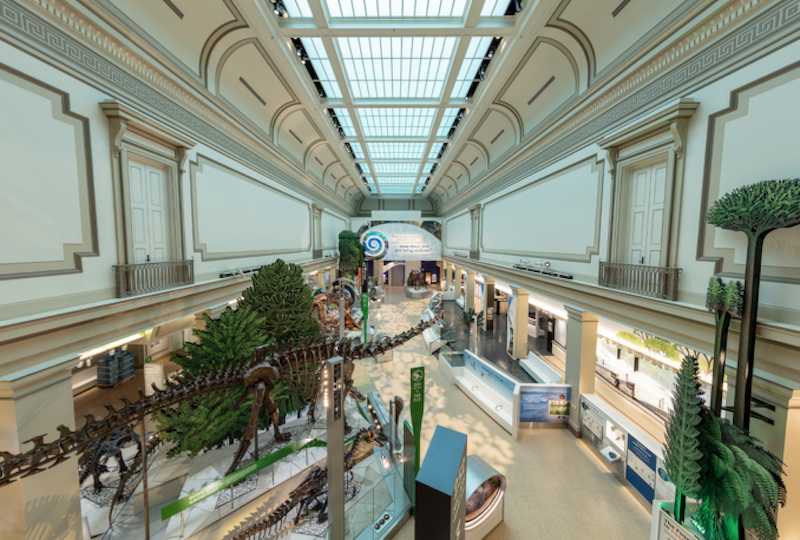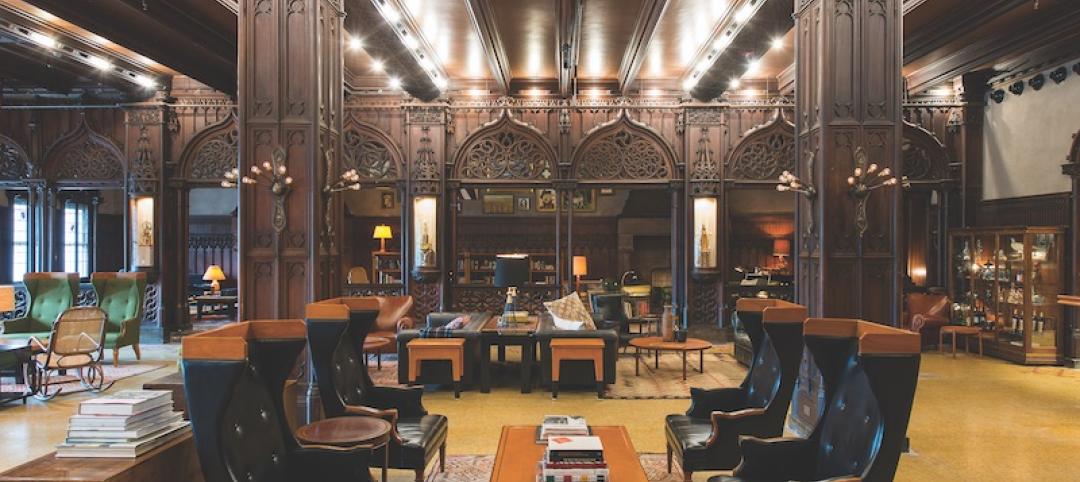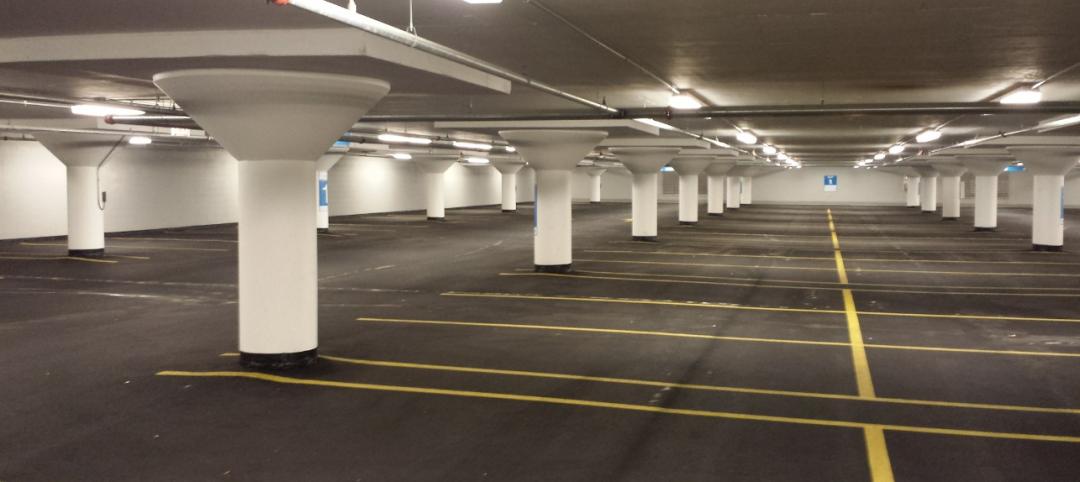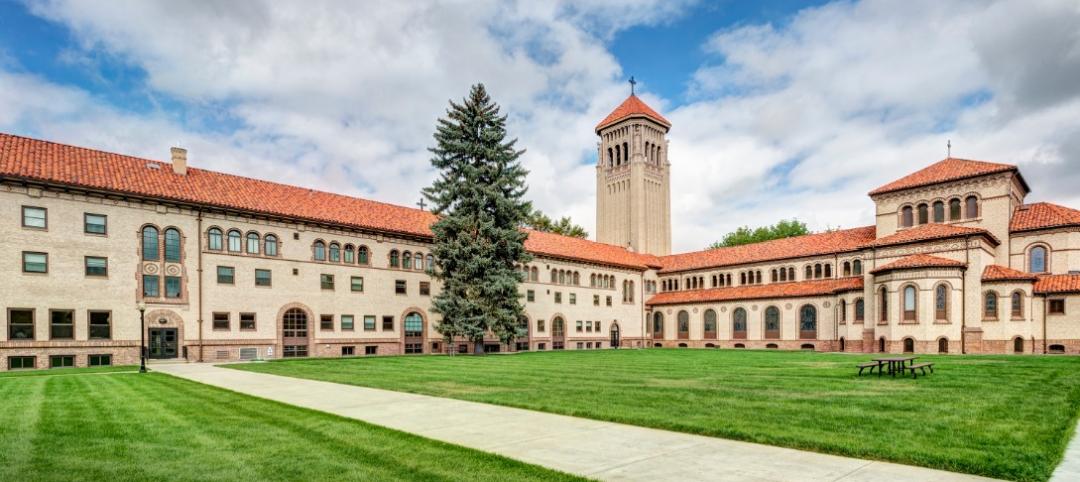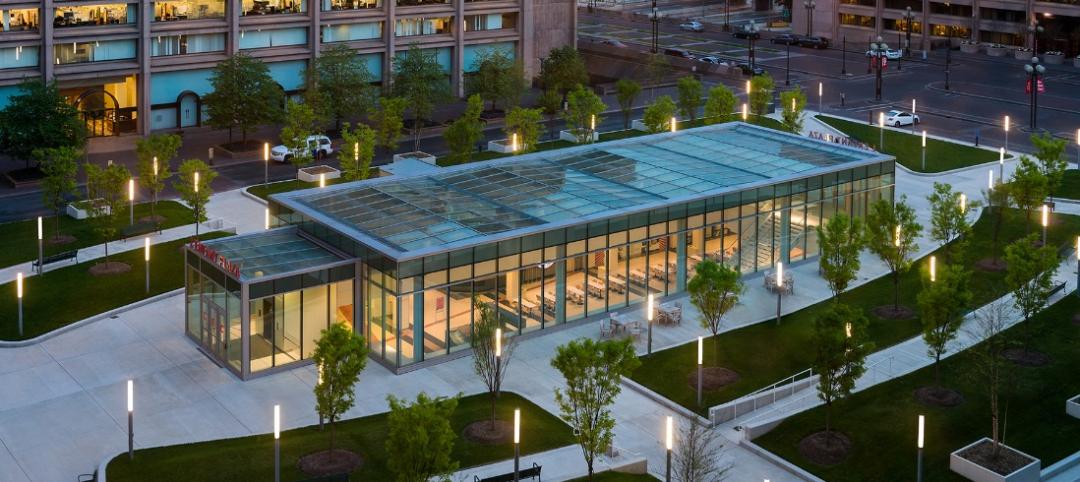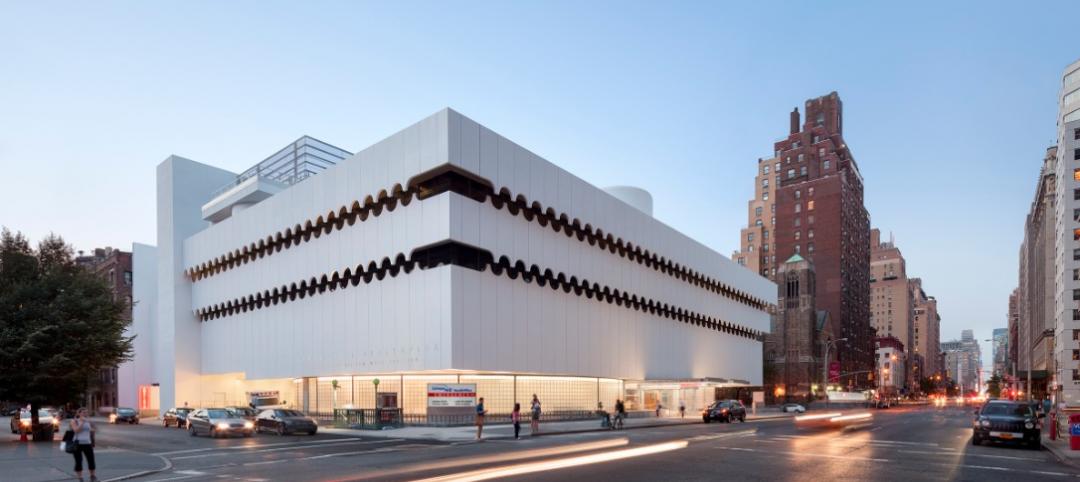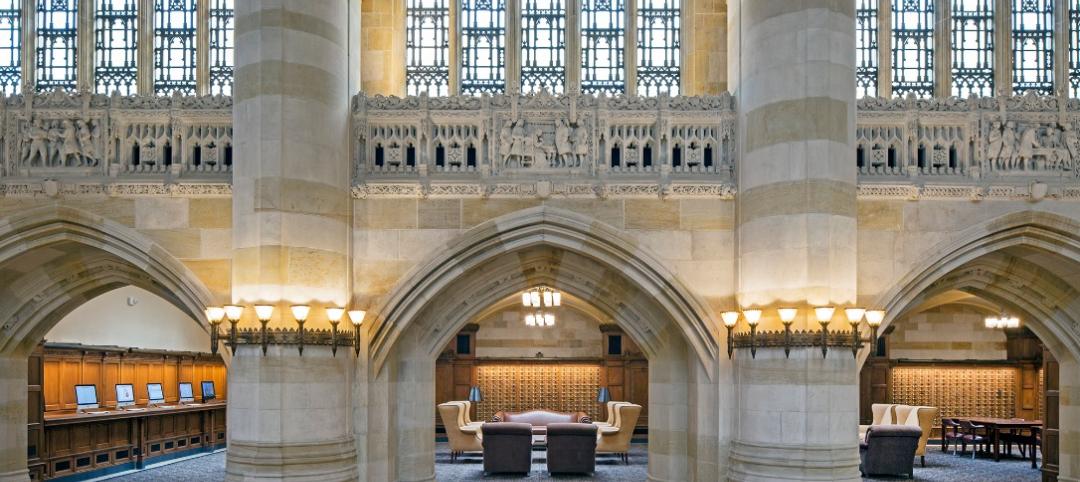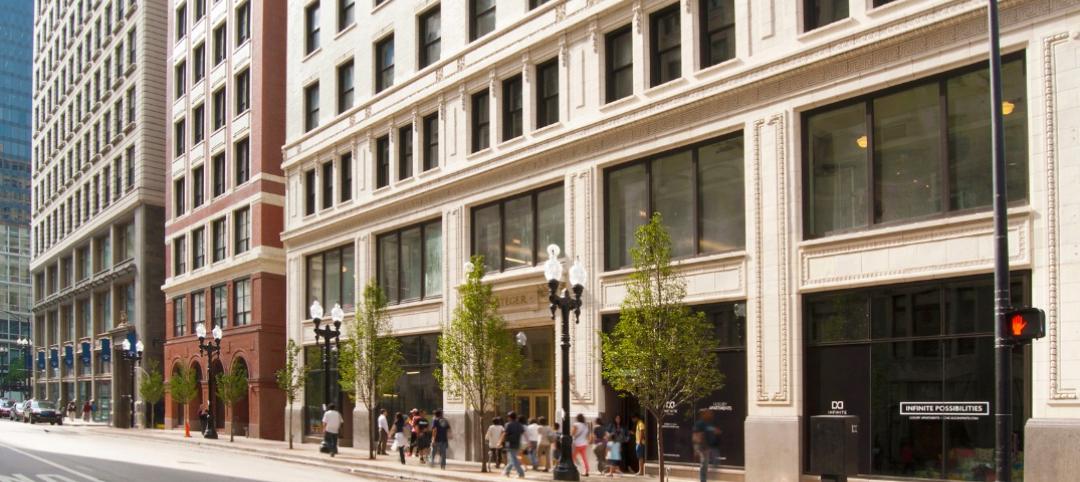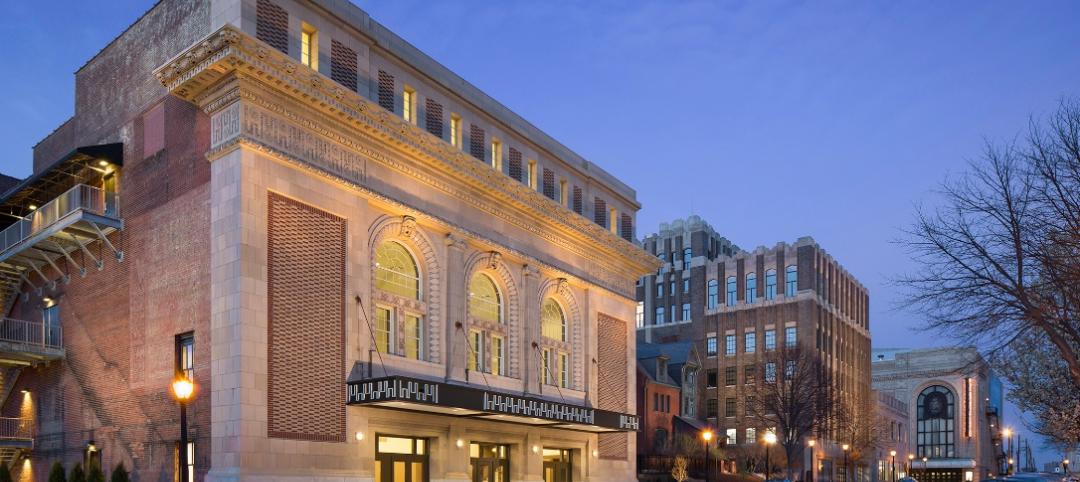The nearly four-year restoration of the David H. Koch Hall of Fossils and installation of the new Deep Time exhibit at the Smithsonian National Museum of Natural History—from building design and construction, to specimen conservation and installation, to exhibit design and fabrication, and finally to commissioning—took place even as the 1910 Beaux Arts gallery remained open to eight million annual visitors.
The project team, led by design firm EwingCole, uncovered and restored the magnificent skylight above the hall. The designers used a glazing system based on aerogel nanotechnology to act as insulator and filter against UV light and heat, bringing daylight into the gallery for the first time in two decades and protecting the 65-million-year-old specimens below.
The hall’s ornate plasterwork, which had been lost for generations, was recreated by skilled craft workers using ancient methods. Templates for the new moldings were cast from original building fabric in a sibling gallery, Sant Ocean Hall.
The new enclosed FossiLab gives visitors a glimpse into the exacting work of Smithsonian scientists and preservationists, while mitigating high levels of noise and dust pollution from adjacent galleries.
HONORABLE MENTION
BUILDING TEAM EwingCole (submitting firm, architect, SE, MEP) Smithsonian Institution—Smithsonian Facilities/Office of Planning, Design and Construction (owner) Reich + Petch (exhibit designer) Grunley Construction (GC) DETAILS 32,000 sf Total cost $125 million Construction time August 2015 to June 2019 Delivery method Design-bid-build
Related Stories
Reconstruction Awards | Nov 11, 2016
Exclusive Chicago club re-emerges as a boutique hotel
Built in 1893 for the World’s Columbian Exposition, the CAA was an exclusive social club founded by leading figures in American sports and commerce.
Reconstruction Awards | Dec 1, 2015
Massive Chicago parking garage gets overdue waterproofing
Millennium Lakeside Garage, the largest underground parking facility in the U.S., hadn’t been waterproofed since the 1970s. The massive project took nearly 2½ years and 33,554 man-hours.
Reconstruction Awards | Nov 30, 2015
Washington Monument restored after 2011 East Coast earthquake
This restoration and repair project, which was completed under budget and eight days early (despite several setbacks), involved re-pointing 2.5 miles of mortar joints, repairing 1,200 linear feet of cracks, and installing 150 sf of Dutchman repairs. Construction took place from November 2011 to May 2014.
Reconstruction Awards | Nov 30, 2015
Denver's 107-year-old seminary campus modernized
The scope of the project included the seminary dorms, library, and chapel, all of which posed their own set of obstacles.
Reconstruction Awards | Nov 24, 2015
Center of I.M. Pei-designed plaza part of Washington redevelopment
The L’Enfant Plaza, a three-story below-grade mall, was renovated to include a new glass atrium pavilion and a 40-foot-long, interactive LED.
Reconstruction Awards | Nov 24, 2015
Manhattan's first freestanding emergency department a result of adaptive reuse
The Lenox Hill Healthplex, a restoration of the Curran O’Toole Building, has glass-block walls and a carefully preserved exterior.
Reconstruction Awards | Nov 19, 2015
Nave restored at Yale’s Sterling Memorial Library
Turner Construction and Helpern Architects revived the 150-foot-long nave, which was embellished with stained glass windows by G. Owen Bonawit, stone carvings by René P. Chambellan, and decorative ironwork by Samuel Yellin.
Reconstruction Awards | Nov 19, 2015
Infinite Chicago redevelopment bridges past to present
The renovation of three historic downtown buildings—the Gibbons and Steger Buildings and Pickwick Stables—includes a multi-level concrete walkway connection.
Reconstruction Awards | Nov 18, 2015
Sun Theater serves the youth of St. Louis
Lawrence Group and property owner TLG Beaux Arts raised $11 million to restore the 26,000-sf theater into a modern performance venue.
Reconstruction Awards | Nov 17, 2015
Smithsonian Institution’s Arts and Industries Building again an exposition and museum space
After removing decades’ worth of unfortunate additions to expose 17 historic interior spaces for the National Historic Landmark, the Building Team zoned in on the client’s key concern.


